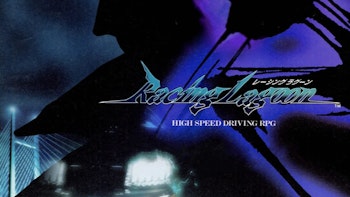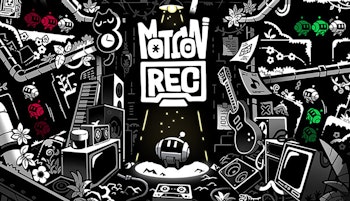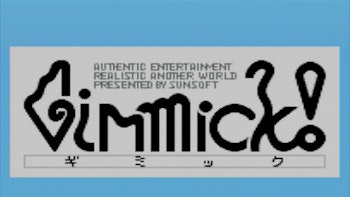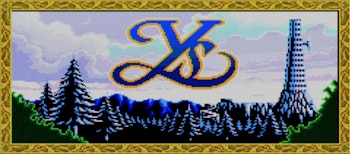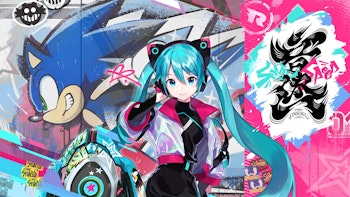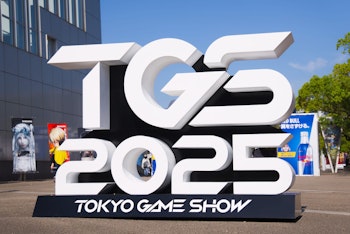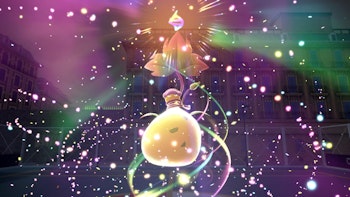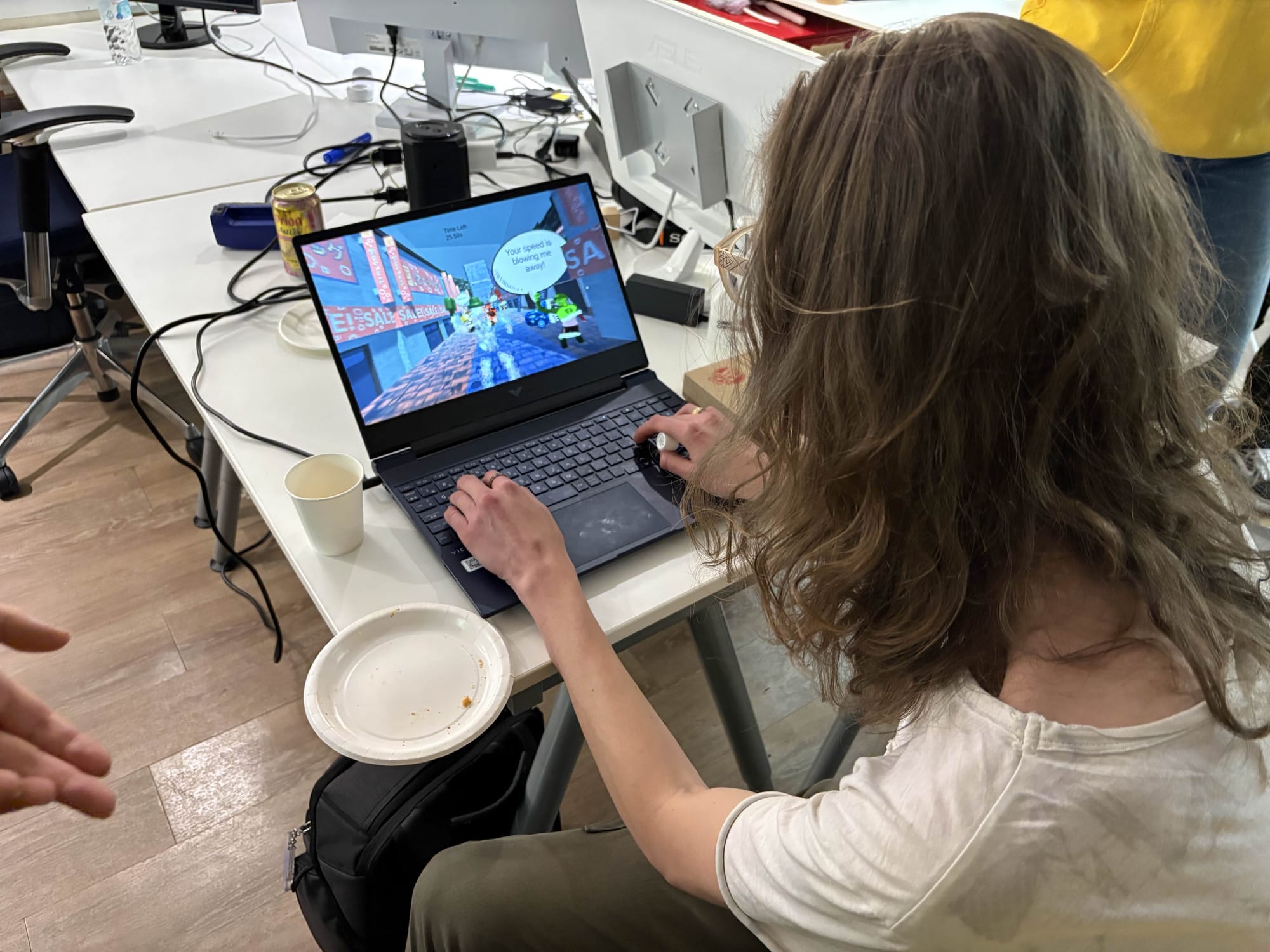
It’s a chilly January in Roppongi, and I’m about to attend my first ever game jam, an event where groups of developers are tasked to make a game from scratch within a short period of time inspired by a central theme. While I have experience writing narrative for games and consulting on the topic, and I’ve even made my own visual novel, I’m not exactly an experienced coder. This could be great, or an absolute disaster.
This was Global Game Jam, a yearly event held in over 100 countries around the world that brings developers all across the globe together in the largest such event worldwide to create around a common theme. It’s a kickstarter for many, a creative revitalization to set themselves up for a year of new ideas, but it’s also a chance to feel connected with people you both already know or have never met through a shared love of creating.
Each location hosting the event is different; some do prizes for the best game, others don’t, some target students or particular demographics, others are open to all. Ultimately, however, they all have the same goal in mind.
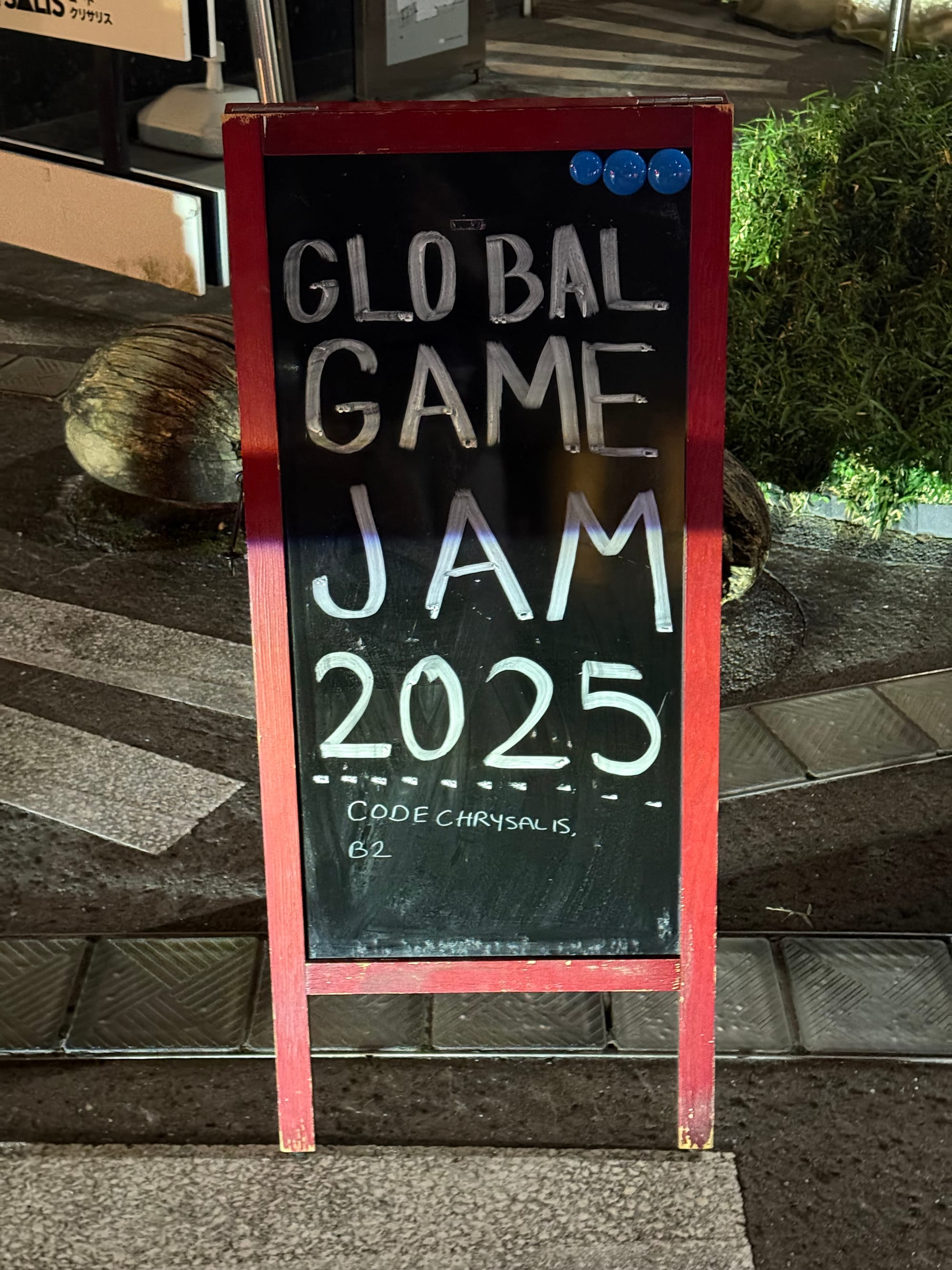
It’s an event that brings people together, and nowhere else is that true more than in Tokyo. In particular my site, Let’s Games! Tokyo, situated just a few streets from the upmarket shopping complex of Roppongi Hills, was set up with inclusivity in mind. In this melting pot and multifaceted, multilayered city, the goal is to bring the Japanese domestic indie and doujin game scenes together with that of the growing numbers of developers from around the world that have made Tokyo their home.
Everything about this site honors these ideals. The site was founded by CJ Hostetter, who created it after moving to Tokyo and was struggling to find a site that would allow them to participate in the event. The base of operations for many of the events in its now-6 year history is Code Chrysalis, which itself was founded by former-Silicon Valley devs who moved to Tokyo for a new life and now run the site as an education center for those wishing to learn coding or to work with companies to retrain staff.
The site exists to be a bilingual, high-capacity location where even first-timers like myself feel comfortable participating in a Game Jam. What’s more, there’s space within the Let’s Games! Tokyo setup for remote participation, which more than a few chose to do alongside a significant in-person attendance. Thanks to multicultural events like Tokyo Indies that also help to bring together local indie devs in the city for regular meetups, a wide range of fresh and familiar faces made me feel at ease as I entered what would be my creative home for a long, exciting, exhausting weekend to come.
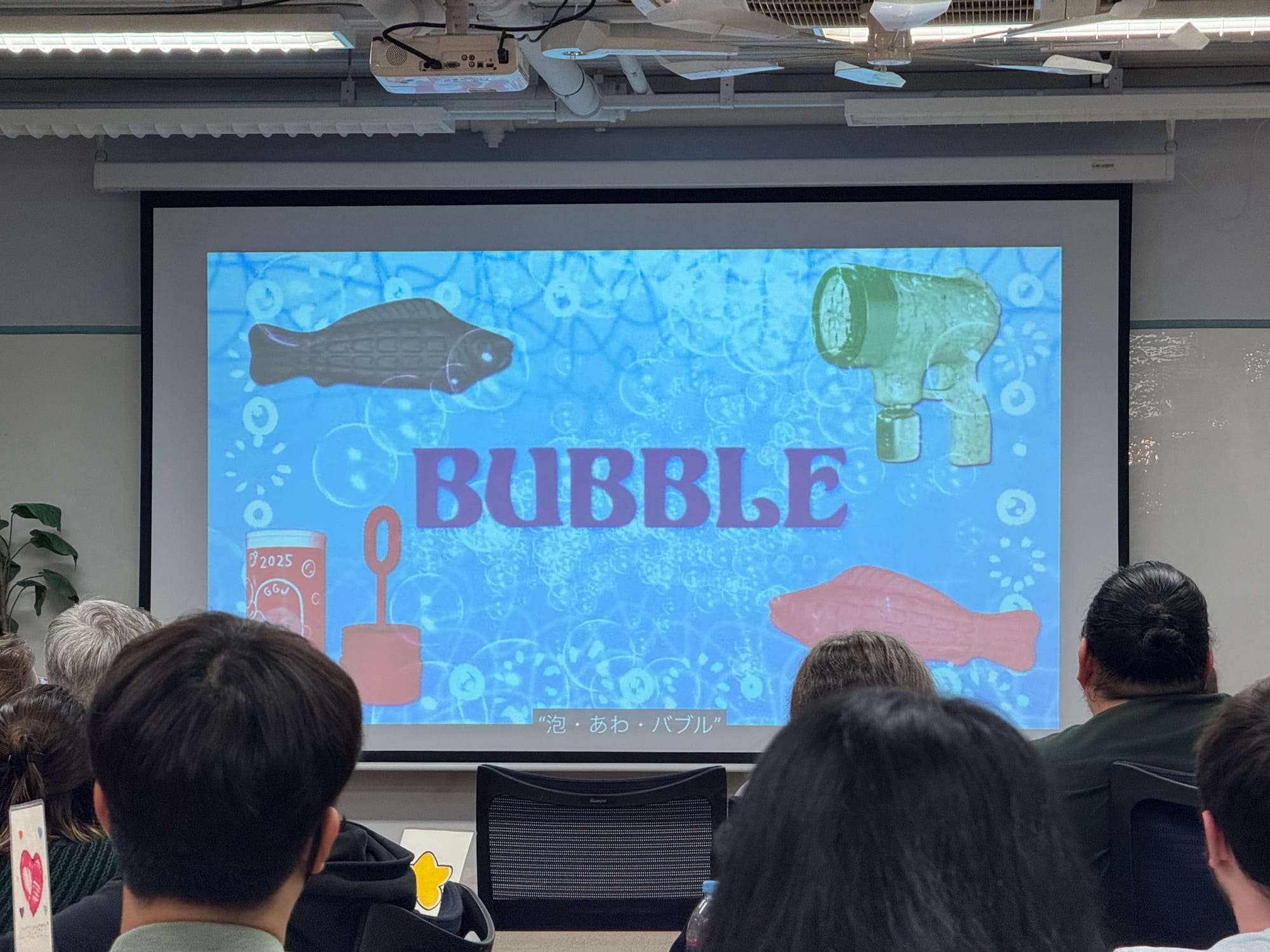
After briefly getting to know people at the event, we were introduced to this year’s theme, the broad concept through which we should center our games. Last year, the concept had been ‘make me laugh’. This time, it was ‘bubbles’, and the results sparked a huge variety of ideas even within the small room of 44 participants. As compiled by CJ in their own report on running the event while making their own game, the participants split into making games across various popular game engines and programming languages like Unity (4 titles), Unreal (2 titles), and Godot, but also more unconventional methods such as the 2D game development architecture PICO-8, visual novel engine Ren’Py, and one made entirely in Javascript. You could even move beyond video games, as one team did with a board game!
Past just making a game, it was about getting to know and communicate across languages. One team had participants who came from Korea. The highest percentage of attendees was native Japanese speakers. A smaller amount were native English, but most of the event was bilingual. My team was a mix of native English speakers on-site with one remote team member who was Japanese, naturally requiring a lot of conversation across language and regular communication to ensure everyone was up to speed even if they weren’t in the venue itself.
Our team also had a range of coding expertise that would need to be considered when knowing what was possible when making our bubble game. I’ve coded visual novels, dabbled in other areas, but certainly lack knowledge. We had modelers, and our remote teammate had experience with Unity, but previously only within a 2D game development process. Naturally, this meant that we settled on creating a runner that would be one of the only games at our site developed in full 3D.
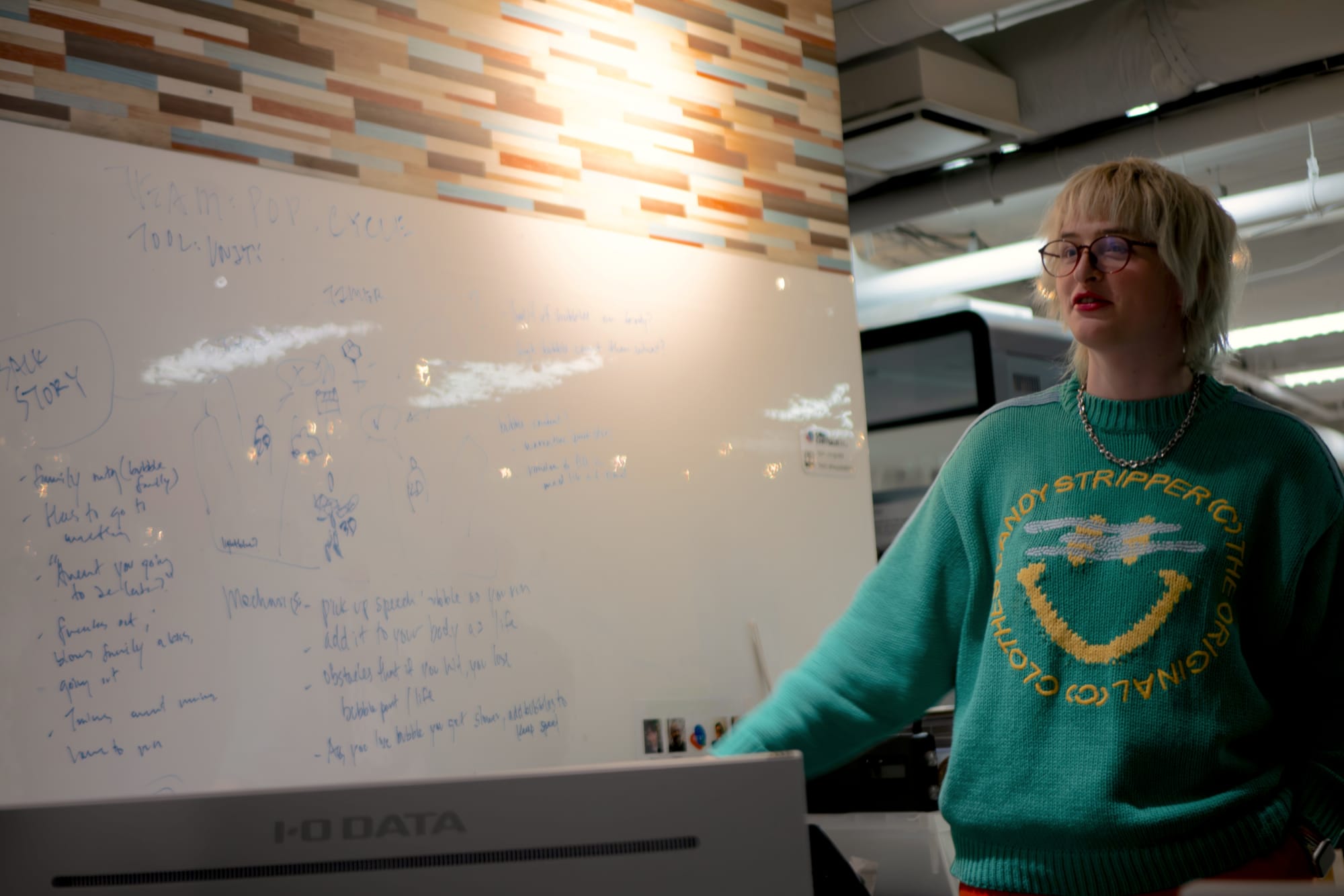
That game was Bubble Boss 2. We wanted to be Bubble Boss, but another team at another site had got ahead of us in creating a page for their team on the Global Game Jam website under that name, so we had to improvise. After a heavy night of drinking, Bubble Boss wakes up to find out he’s late for a meeting with Panafoamic, and with the trains canceled must run to seal a new deal for Toshibubble or risk being fired.
For those who have never participated in a Game Jam before, what followed over the next few days was an intense crash course through all the stages of game development. You’re not going to be making a 70-hour RPG when you don’t even have that many hours in the weekend to complete the game from Friday evening to Sunday, but you can create a contained, fun experience. Understanding the limits and adapting to challenges - nothing will go as you expect, no matter how much you prepare - will ensure the best final project.
The decision of 3D development from us, for example, came from the fact that we wanted to challenge ourselves while avoiding overstepping our bounds. The runner concept was inspired by the PlayStation game Pepsiman which would keep movement simple even within a 3D environment. We lacked artists, but as a photographer I used that skill to take photos of other attendees and different cars and objects around the venue to edit in a photo collage-esque style, at least initially inspired by Never Mind the Bollocks. If you hit obstacles you would slow down by popping bubbles, but could recover by receiving complements in the form of bubble puns from NPCs.
Our site was strict in keeping attendees from overwork, with opening hours for the site helping avoid overeager creators pulling all-nighters or sleeping under desks. It still included a hectic 11-hour Saturday as we faced challenges getting everything to work until the final hours of Sunday. We wanted randomly-placed obstacles but chose to create static levels. Still, we were proud of the fun, pun-filled final result. We worked together, as a team, received encouraging words from the other creators on the site as we all collectively checked on each other’s work, and left proud of the results.
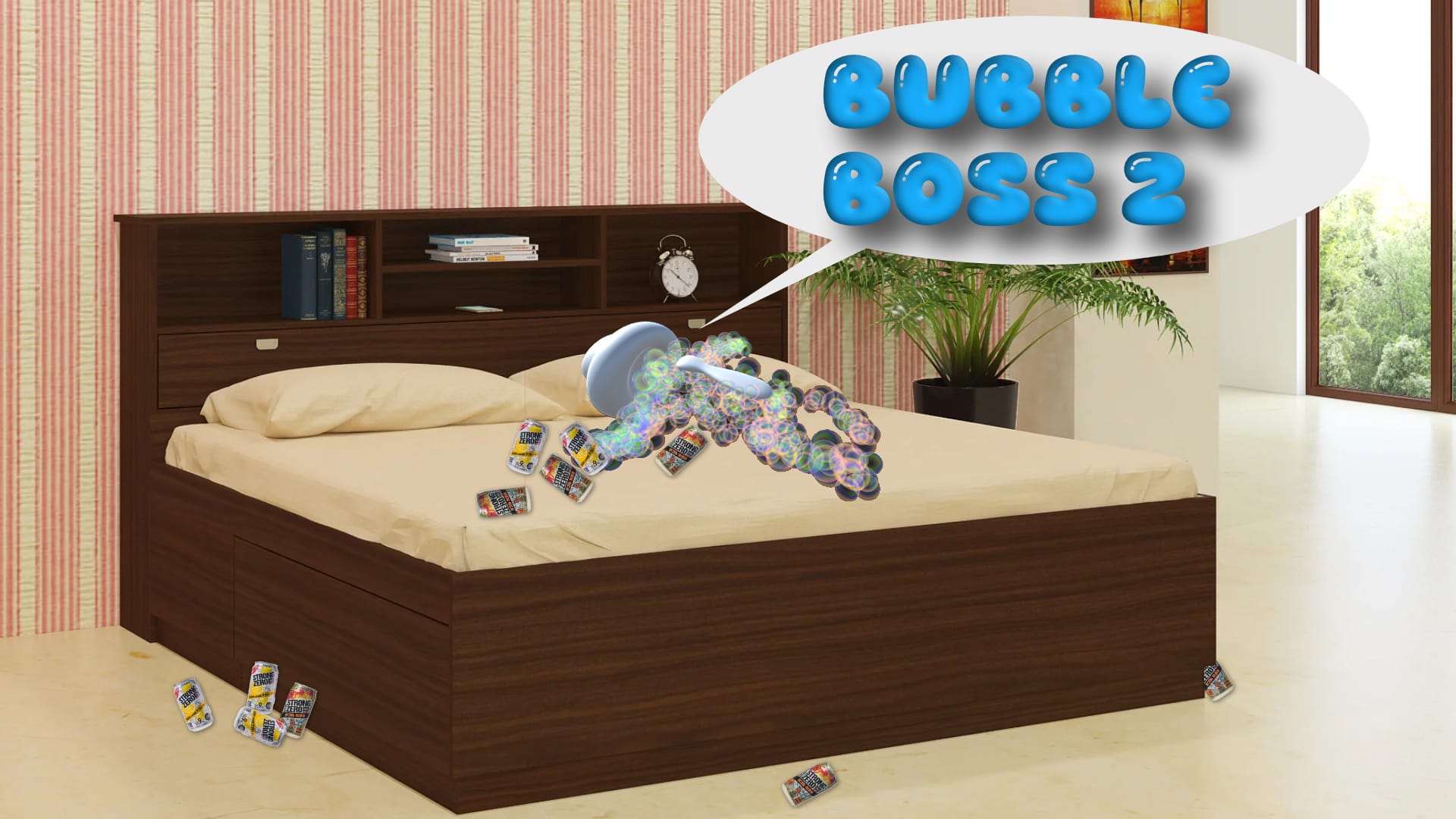
It worked! Over two days we created a single level where Bubble Boss ran through a street filled with restaurants on the way to Panafoamic. At the end of it all, we got to check out the other teams’ work over pizza from a nearby Dominos, where the innovative teams created titles like Champion-pan (select your bread and collect crowns by bouncing on bubbles to win) to the adorable cat-themed Uwa-Teiru (play as a cat jumping from bubble to bubble to achieve their bubble dreams). On our site alone we could get existential in a bullet-hell question of life with What is it like to be a bubble? A great multiplayer concept drove Escape from Bubble Island as you tried to collect the most bubbles within the time limit to float away before the island falls from the sky, and we could find self-acceptence with Bubble Butt.
It was a great vibe, in a multinational space that brought minds together for the very first time. But that wasn’t the only thing about Global Game Jam that sought to connect Tokyo’s expansive indie scene.
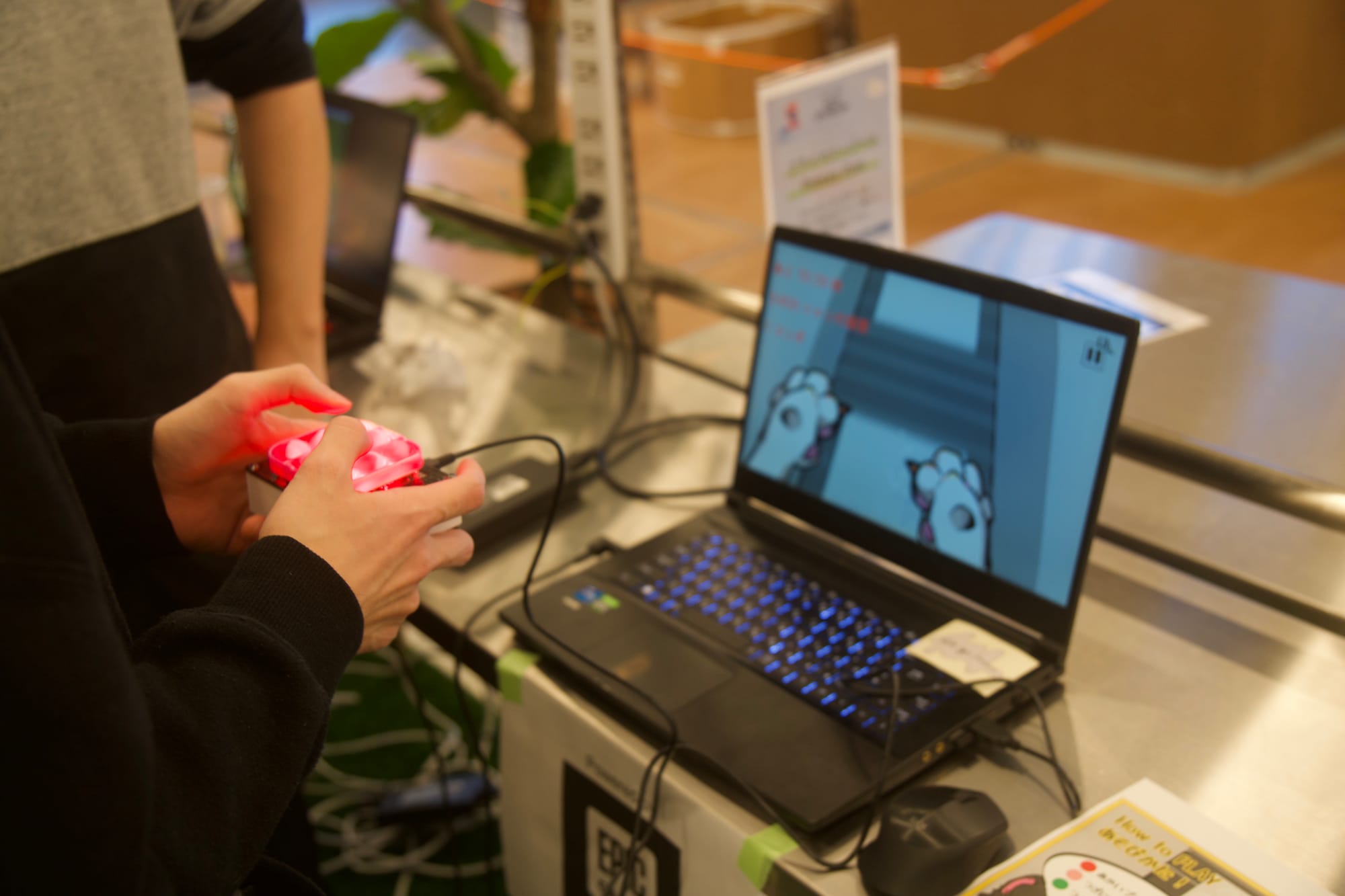
One week later, inside the walls of Shibuya Sakura Stage at the 404 Not Found space, coinciding with a renewal of their gaming display, a party was held to bring the different Tokyo Global Game Jam sites together to celebrate their efforts. At least one representative from most of our teams attended alongside those from other locations across the city that took on the challenge, with the aim to showcase our work and generally unwind and meet more people.
It’s here you not only saw the depth and range of Global Game Jam’s innovation, but the potential these talented creatives have for producing unique ideas inspired by life here in Tokyo. You had games using fidget toys as controllers to pop bubble wrap. One team ripped their game to physical disks to give to attendees. In one game, Bubble Cave, the developers participated in a Game Jam in a remote town in Okutama. Having already known the developers I was asking them how their experience went, and the site is operated from an inn that the group fully rented for the duration of the event that also only spends roughly 50% of the time actually making games. The rest of the trip was spent exploring local sights like Hatonosu Gorge and the Nippara Limestone Cave, the latter being the direct inspiration for their exploration-driven final project.
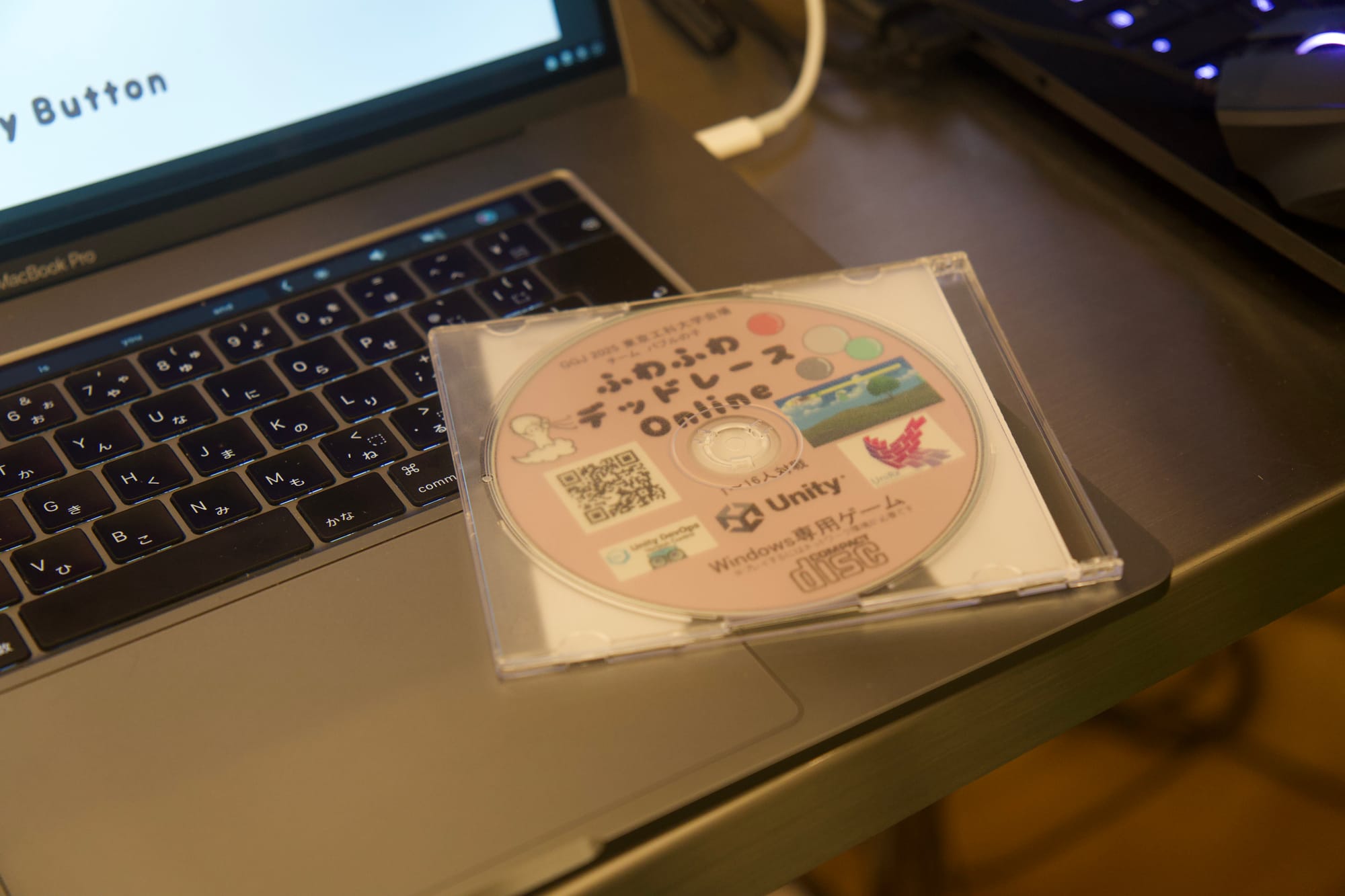
It was such a unique approach to the jam different from the inner city sites but also showcases the strength of ideas that shine under these unique circumstances.
Japan’s indie scene is growing, slowly but surely. Often overshadowed by overseas voices, local events in Tokyo and other regions like Kansai, numerous indie and doujin events from the floors of Comiket and Comitia, to Bitsummit and Digigame Expo and Tokyo Game Show and so much more, are what makes the scene unique. It brings so many individual voices into one place for regular events to share their work with others and the public and uplift one another. Playing the games of others there was nothing but praise, but also encouragement from some to keep working together on new ideas after the Jam came to an end.

The Japanese indie scene has grown from from the doujin scene and thrives on the grassroots community that has built it up for decades. This long-running in-person collaboration is something that events like Global Game Jam thrive within, and by bringing both these domestic voices together with international residents that share their own unique perspectives, the result can’t be replicated anywhere else.
Most of all, it’s fun. Thanks to a great host site and a supportive team, I had a wonderful time participating in my first Global Game Jam. I’m sure it won’t be the last. Even after many years integrated within and following the indie scene, it’s events like this that cement the potential of this scene in its camaraderie that has the prospective for greatness in the games that are released from it. Japanese indies already have so many unique games that are such an innovative departure from what is seen in America, Europe, and elsewhere.
When you’re around such creative people, it’s clear they’ve only scratched the surface of their potential. I hope you’re watching.
